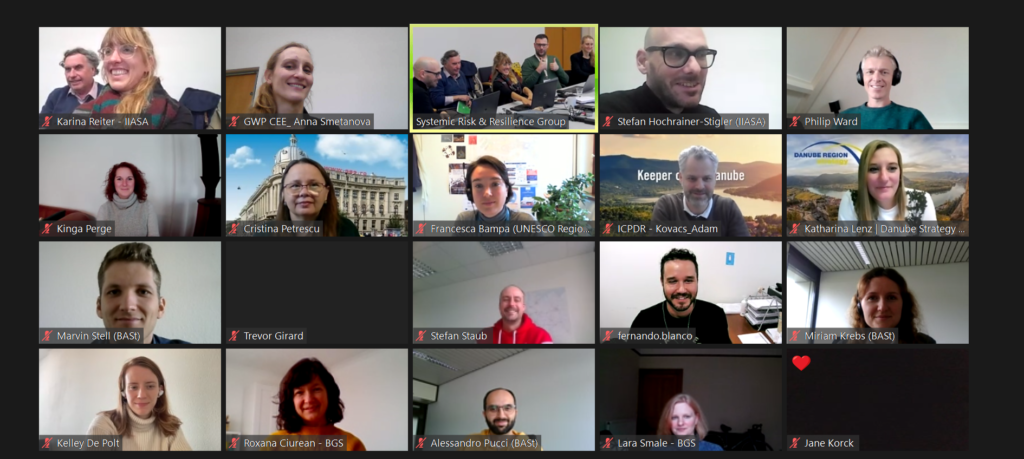
Multi-risks within a transboundary river setting
The Danube: a transboundary river that has been a hotspot for the political and cultural evolution of Eastern and South Eastern Europe. Its banks are shrouded in rich history and host many of Europe’s castles, palaces and monasteries, the river also acts as a vital shipping route for continental Europe and beyond. However, like many transboundary rivers it has been burdened with environmental issues such as climate change, biodiversity loss and pollution.
The MYRIAD-EU Danube pilot contributes to the new EU strategy for the Danube Region (EUSDR), specifically, its actions on environment risks and strengthening disaster prevention and preparedness.
On 15th November 2022, a hybrid online workshop was held to introduce MYRIAD-EU to an audience of representatives from Austria, Hungary, Slovakia, Bosnia and Herzegovina, France, Germany, Switzerland and Italy. These representatives were from a variety of sectors including research, science and transport.

A river at risk?
Danube has had its share of challenges over the years, experiencing periods of severe flooding followed by lengthy droughts which have had negative impacts on water-dependent sectors (such as agriculture), vegetation and the aquatic environment. In May 2014, torrential rains caused flooding that badly affected Bosnia and Herzegovina, Croatia and Serbia, causing the evacuation of thousands and the deaths of 80 people. In 2015, high temperatures and water shortages resulted in drought phenomena (such as water shortages) in 10 countries within the Danube basin. In the future as weather patterns become more unpredictable, having legalisation and actions plans in place to respond to these challenges will become increasingly important.
Imagining risks together
During the workshop, rather than providing participants with different multi-risk events, they were required to work in collaboration to brainstorm the most plausible multi-risk scenarios for the Danube. Participants were informed about three different type of risk scenarios: consecutive, compound and amplifying. Through discussions a preference for consecutive and compound events was revealed due to their frequency of occurrence within the Danube region. Their co-created examples included:
- Consecutive drought events, increased ground water depletion and water conflicts
- Compound floods and droughts
- Consecutive floods and droughts (or vice versa)
- Parallel flooding on multiple rivers
- Compound flood and consecutive drought
- Wildfires triggered by dry seasons
- Compound winds and floods
The discussions between stakeholders based on improving multi-risk assessment and management was fed by the following points:
- Collaboration between the countries to share best practices could act as a means of counteracting multi-hazard events.
- There are still barriers that prevent full implementation of multi-risk assessment e.g., unaligned legislative and policy settings across countries, different priorities when it comes to allocation of funding and the discrepancies when it comes to national vs transboundary approaches to risk management.
The discussions revealed many opportunities such as deployment of sustainable finance and EU funding for national projects, overarching policies and active international bodies, utilisation of existing funding models for transnational cooperation and the benefit of collaborating with other countries on best procedures to deal with different hazards at the same time. From the workshop it became clear the importance of having a more unified handling of multi-risk related issues, including multi sector considerations on the impacts of multi-hazard scenarios and the need to address regional perspectives of multi-risks which can act as barriers.
Next Steps
The MYRIAD-EU framework was well received by participants, they envisioned incorporating it into their work due to its focus on multi-risks, their interdependencies, the distinction it makes between indirect and direct risks and the emphasis it places on transboundary impacts.
Stay tuned for the next Danube pilot workshop, set to take place in 2025.
